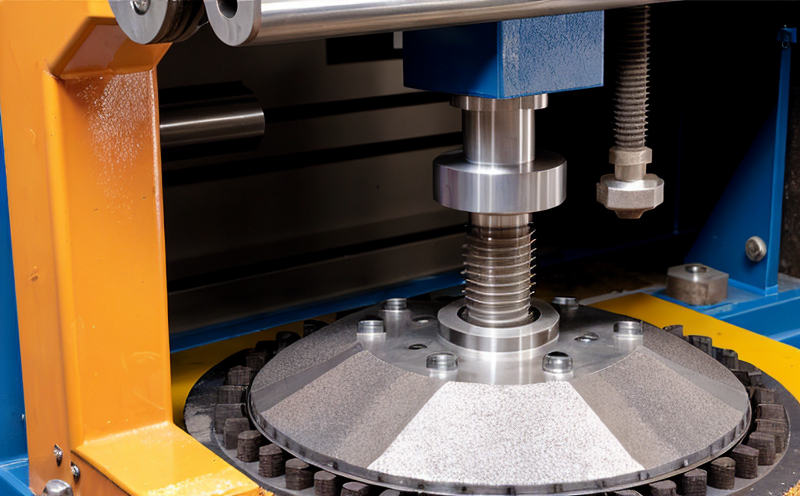ISO 10816-3 Vibration Monitoring of Rotating HVAC Equipment
The International Organization for Standardization (ISO) has developed a series of standards that provide guidelines and specifications to ensure the reliability, performance, and safety of rotating machinery. Among these is ISO 10816-3, which focuses on vibration monitoring techniques for rotating equipment in HVAC systems. This standard provides a comprehensive framework for assessing the condition of critical components like fans, compressors, and pumps used in HVAC applications.
Rotating HVAC equipment plays a crucial role in maintaining optimal indoor air quality and comfort levels within buildings. Ensuring these machines operate efficiently and reliably is essential for energy conservation and occupant health. Vibration analysis offers a non-invasive method to monitor the operational integrity of rotating components, enabling early detection of potential failures before they escalate into more costly repairs or replacements.
The ISO 10816-3 standard outlines specific procedures for conducting vibration measurements on rotating machinery. It specifies the types of sensors required, the frequency ranges over which data should be collected, and the methods for interpreting the results. This ensures that all testing is conducted consistently across different environments and organizations.
One key aspect of this test involves understanding the baseline levels of vibration expected from a particular piece of equipment under normal operating conditions. By establishing these baselines, technicians can more easily identify deviations indicative of impending failures or operational inefficiencies. Additionally, ISO 10816-3 emphasizes the importance of considering environmental factors such as temperature fluctuations and ambient noise when interpreting test results.
Another important consideration is proper specimen preparation prior to testing. This includes ensuring that all fasteners are tight, oil levels are appropriate, and any protective covers are securely in place. Proper setup ensures accurate readings throughout the vibration monitoring process. Once prepared, technicians can begin collecting data using accelerometers attached directly to key areas of concern on each machine.
Data analysis forms another critical component of this testing procedure. Using specialized software tools designed specifically for interpreting vibration patterns from rotating machinery, analysts compare current measurements against previously established baselines. They look for trends or anomalies that might indicate issues such as misalignment between shafts, worn bearings, or loose couplings.
Finally, reporting findings accurately based on these analyses is paramount in maintaining compliance with relevant standards and regulations. Clear documentation helps facilities maintain their records while also facilitating communication among maintenance personnel responsible for addressing identified problems promptly.
Why Choose This Test
Selecting ISO 10816-3 vibration monitoring as part of your HVAC equipment testing regimen offers several advantages. Firstly, it provides a standardized approach to assessing the condition of rotating machinery across various industries and applications. This consistency ensures that all stakeholders involved in managing these systems receive reliable information about potential risks or areas for improvement.
- Early Detection: By identifying issues early on through regular vibration monitoring, you can avoid costly breakdowns and unexpected downtime.
- Cost Efficiency: Preventive maintenance strategies supported by ISO 10816-3 help reduce long-term expenses associated with repairs and replacements.
- Improved Performance: Regular checks ensure that your HVAC equipment continues to operate at peak efficiency, leading to better overall building performance.
In addition to these benefits, choosing this test also aligns your operations with industry best practices. Compliance with internationally recognized standards enhances trustworthiness and credibility among clients, partners, and regulatory bodies alike.
Environmental and Sustainability Contributions
The efficient operation of HVAC systems has significant implications for environmental sustainability. By leveraging ISO 10816-3 vibration monitoring to maintain optimal performance, organizations contribute positively towards reducing energy consumption and minimizing greenhouse gas emissions associated with heating, cooling, and ventilation processes.
Regular inspections and timely interventions enabled by this testing method allow facilities to operate more sustainably by preventing unnecessary wear and tear on components. This reduces the need for frequent replacements, which in turn decreases waste generation and resource depletion. Furthermore, maintaining high levels of operational efficiency can lead to lower utility bills, contributing directly to cost savings while simultaneously supporting broader sustainability goals.
Beyond immediate operational improvements, investing in robust vibration monitoring programs fosters a culture of continuous improvement within organizations. As technologies evolve, so too do the methods employed for testing and ensuring reliability. Embracing these advancements helps keep your facility ahead of industry trends, positioning it as a leader in environmental stewardship.
Competitive Advantage and Market Impact
Adopting ISO 10816-3 vibration monitoring for HVAC equipment testing provides clear advantages over competitors who may not prioritize similar practices. Here’s how:
- Enhanced Reputation: Demonstrating a commitment to rigorous quality assurance measures enhances your reputation as an industry leader.
- Predictive Maintenance: Implementing proactive maintenance strategies based on vibration data significantly reduces unplanned outages, improving service availability.
- Customer Satisfaction: Providing reliable HVAC systems that meet or exceed expectations fosters strong customer relationships and repeat business opportunities.
In terms of market impact, adhering to this standard allows you to differentiate yourself from competitors by offering superior product offerings. This can attract customers seeking eco-friendly solutions or those looking for long-term partnerships built on trustworthiness and reliability.
Moreover, staying current with international standards like ISO 10816-3 ensures that your organization remains compliant with global regulations while also positioning itself as a forward-thinking entity capable of adapting to changing market demands.





